French Travel Memories 1 - Daniel in Paris
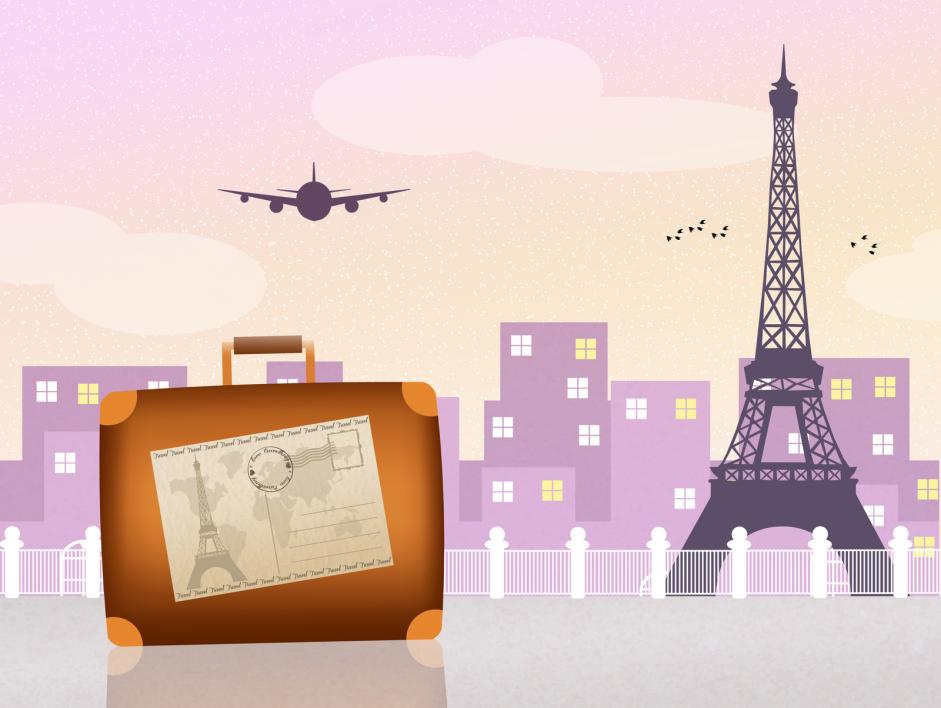 The French Travel Memories expand on our GamesforLanguage travel-story based courses, which use the cities' real street names, places, restaurants, hotels, etc. We visited many of them ourselves and tell you a little more about each French city.
The French Travel Memories expand on our GamesforLanguage travel-story based courses, which use the cities' real street names, places, restaurants, hotels, etc. We visited many of them ourselves and tell you a little more about each French city.
In future blog posts, we'll provide additional details for each of the cities our young travelers visit in Germany, France, Italy, and Spain. (You'll find our first German post by clicking on: German Travel Memories 1 – Michael in Frankfurt)
Daniel's first stop is in Paris, France's cosmopolitan capital, and where his travel memories begin.
We'll follow Daniel's discoveries in Paris. For those of you who have done or are doing our French 1 course: Daniel en France, this post provides some local color. Others may discover some new things about Paris and perhaps get inspired to dig deeper.
In our travel-story course, you learn daily conversational language. The vocabulary listed here is a combination of some words taught in the course as well as other useful terms.
Visiting Paris? To many of you, Paris doesn't need much of an introduction. Besides, there are plenty of sites that can fill in any gaps. We'll just mention a few quick facts and list some basic terms in French that will help you in your travels.
A FEW QUICK FACTS ABOUT PARIS
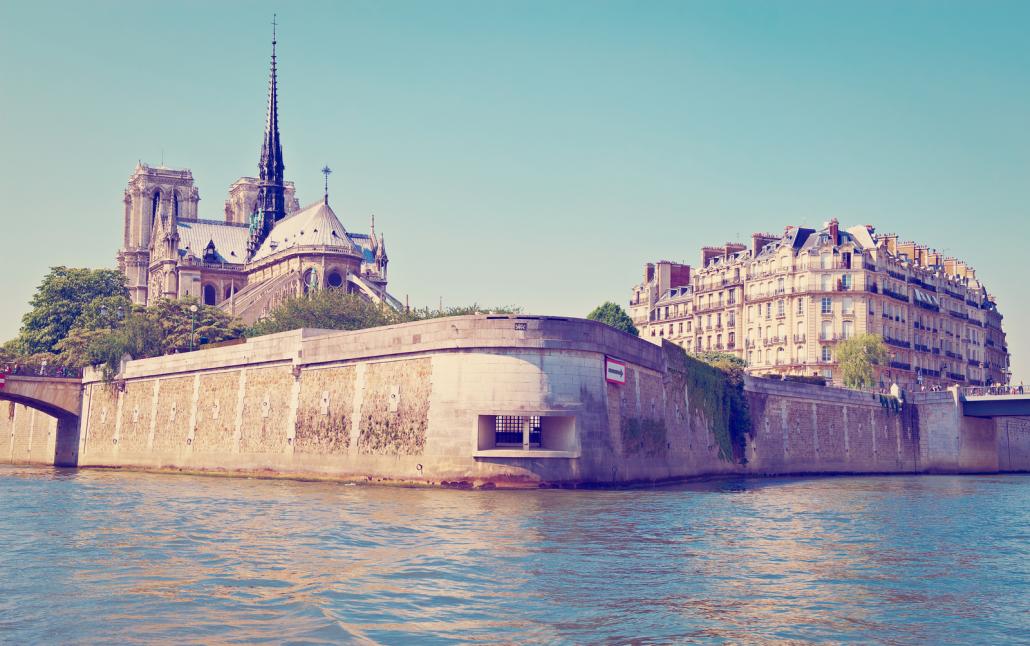 Paris was founded in the 3rd century BC by a Celtic people called the Parisii, who gave the city its name.
Paris was founded in the 3rd century BC by a Celtic people called the Parisii, who gave the city its name.
They settled on Île de la Cité (see photo), an island in the middle of the Seine river and located on an important north-south trade axis.(The well-known Cathédrale Notre-Dame, seen on the photo was later located there.)
In 52 BC, the Romans set up camp on the Île de la Cité and (temporarily) renamed the city Lutetia.
By the end of the 12th century, Paris had become the largest city in the western world, and the political and economic capital of France.
By the 17th century, Paris was an important center of finance, commerce, science, fashion, and the arts in Europe. It continues to play that role today.
It was interesting to read why Paris is called “The City of Light” (La Ville Lumière). For one, Paris played an important role during the Age of Enlightenment, a philosophical movement that championed the concepts of reason, liberty, and the scientific method, seeking to illuminate man’s intellect. For another, Paris and London were two of the early cities to adopt gas street lighting.
Since the late 19th century, Paris has also been known as Panam(e) (pronounced: [panam]) in French slang.
The city of Paris (also called the Commune or Department of Paris) now has a population of over 2.2 million people. The urban area of Paris is estimated to have a population of 10.5 million.
Île-de-France, also called “région parisienne” is one of the 18 regions of France. It includes Paris as well as 7 other administrative departments. The Île-de-France region has a population of over 12 million inhabitants.
1. Practical words and phrases
la capitale - the capital
la ville - the city, town
la lumière – the light
Île de la Cité – an island in the Seine, within the city of Paris
la commune - the town, municipality
l'arrondissement – city district
le fleuve – the river (flows into the sea)
la rivière - the river (flows into a lake or another river)
l'aire urbaine (f) - the urban area
la banlieue – the suburbs (autonomous administrative entities outside of the city of Paris)
Île-de-France – one of the 18 regions of France
PARIS CHARLES DE GAULLE AIRPORT
Daniel is a young student who learned some French at home and later studied it in school. However, this will be his first visit to France. On his flight to Paris, Michael chats in French with the flight attendant and with the woman who's on the seat next to him.
He arrives at the Charles de Gaulle Airport, which is Europe's 2nd busiest airport in Europe, after London. As Daniel goes through Passport Control, he continues to speak French. Responding to the standard questions, he has to explain why he is traveling to France and how long he will stay.
2. Practical Words and Phrases
le vol - the flight
l'hôtesse de l'air/le steward - the flight attendant f/m
l'aéroport (m) - the airport
le contrôle des passeports - the Passport Control
Êtes-vous ici pour affaires? - Are you here on business?
“affaires” has multiple meaning: affairs, matters, business
Combien de temps? - How long?
un bon séjour - a good stay
PARIS NEIGHBORHOODS
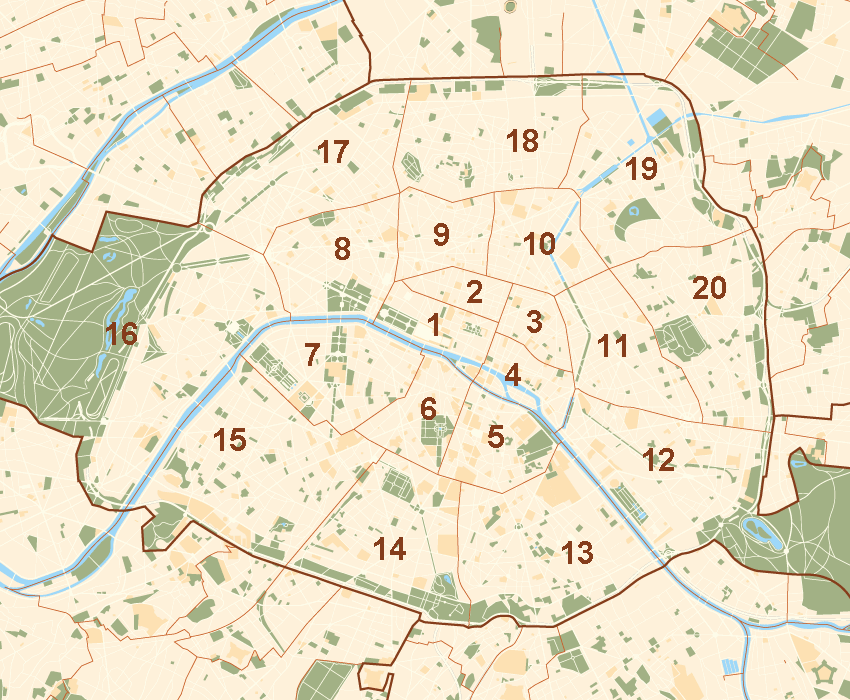 Paris is divided into 20 “arrondissements,” or administrative districts, arranged in the form of a clockwise spiral (snail shell) starting from the middle of the city, the first being on the Right bank (north bank) of the Seine, the 20th being on the outer edge. (Plan by ThePromenader http://www.paris-promenades.com
Paris is divided into 20 “arrondissements,” or administrative districts, arranged in the form of a clockwise spiral (snail shell) starting from the middle of the city, the first being on the Right bank (north bank) of the Seine, the 20th being on the outer edge. (Plan by ThePromenader http://www.paris-promenades.com
with numbers in map.)
Most of the districts have their particular brand of Parisian identity and atmosphere. A brief description of each arrondissement can be found HERE. You can click on the number of a particular district to see the streets, metro stops, monuments, etc.
RUE LA FAYETTE
Daniel's aunt and uncle live in the 9th arrondissement, on Rue La Fayette (which also continues through the 10th district). Rue La Fayette is two miles long and an important axis on Paris' Right Bank.
The 9th district is a lively and diverse residential area, with many boutiques, restaurants, and bars. Historically, the fashionable, the moneyed, and the artistic mingled there.
In the 9th you'll find the Paris Opera and the neighborhood of Pigalle, home of the cabaret Moulin Rouge. The painter Henri Toulouse-Lautrec had his studio there, and Pablo Picasso and Vincent van Gogh lived near Place Pigalle.
You'll also find the famous department stores Printemps and Galeries Lafayette in the 9th.
The Galeries Lafayette are a chain of upscale department stores. The famous flagship store on 40 Boulevard Haussmann had its early beginnings in 1893 with a small fashion shop located at the corner of rue La Fayette and rue de la Chaussée-d’Antin. The shop founders were two cousins from Alsace, Théophile Bader and Alphonse Kahn.
In the next couple of decades, Bader and Kahn added adjacent buildings, with the goal to transform the whole complex into something of a luxury bazaar.
The architect Ferdinand Chanut “called upon great artists from the École de Nancy to decorate this magnificent building in the style of Paris Art Nouveau. ... The dome, rising to a height of 43 metres, soon became the iconic symbol of Galeries Lafayette. Master glass-maker Jacques Gruber was responsible for designing the Neo-byzantine style stained glass windows.”
The store was inaugurated in 1912. You can read more HERE.
SAINT-GERMAIN-DES-PRÉS
Saint-Germain-des-Prés is an administrative quarter in the 6th arrondissement of Paris. This quarter has a large number of bookstores and publishing houses and several famous cafés including Les Deux Magots (where Daniel has “un verre” with his aunt when he returns to Paris.)
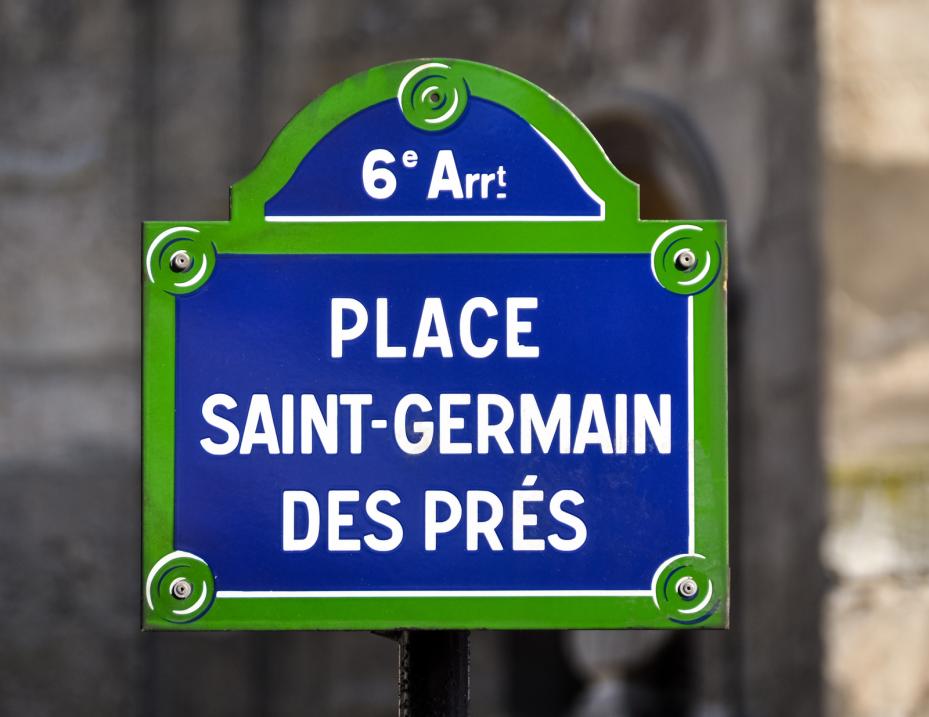 As you can see on the image, the number of the arrondissement is shown on all signs of streets and squares.
As you can see on the image, the number of the arrondissement is shown on all signs of streets and squares.
In the middle of the Twentieth century, the Saint-Germain-des-Prés quarter was the center of the Paris Existentialist movement (associated especially with the writers Jean-Paul Sartre and Simone de Beauvoir).
The church of Saint-Germain-des-Prés is one of the oldest churches in Paris. Originally a Benedictine Abbey, it was founded in the 6th century AD.
Historically, Saint-Germain-des-Prés square was an important marketplace thanks to its annual fair. The Foire Saint-Germain, which dates back to 1176, attracted merchants from all over Europe throughout the centuries. It lasted generally three to five weeks around Easter. Today, there's a covered market on the square.
3. Practical Words and Phrases
la place – the square
le marché – the market
la librairie – the bookstore
l'éditeur – the publisher
la maison d'édition – the publishing house
la foire – the fair, trade fair
un verre - the glass
prendre l'apéritif – to have an aperitif (pre-dinner drink)
RUE DE GRENELLE
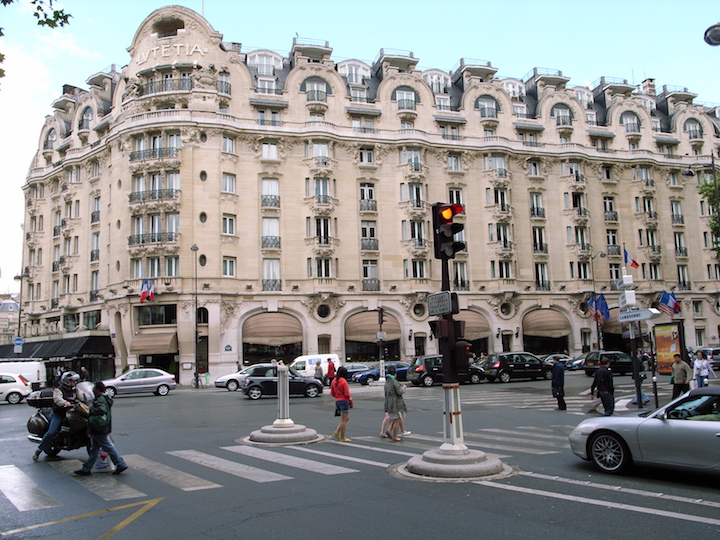 Daniel returns to Paris at the end of his trip and stays for a few days with his aunt Juliette, who lives on Rue de Grennelle, in the 6th arrondissement.
Daniel returns to Paris at the end of his trip and stays for a few days with his aunt Juliette, who lives on Rue de Grennelle, in the 6th arrondissement.
On his way to Rue de Grenelle, Daniel passes Hôtel Lutetia, located at 45 Boulevard Raspail (see picture). It was built in 1910 in the Art Nouveau style and was named after the early Roman town Lutetia.
The interiors of the hotel are in the somewhat later Art Deco style. During Nazi occupation of France, the hotel played an important role as a shelter for refugees.
Over the years, the hotel was visited by guests such as Picasso, Charles de Gaulle, James Joyce (who wrote part of his novel Ulysses here), Peggy Guggenheim, and Josefine Baker.
Rue de Grenelle is a funky street lined with stunning 17th and 18th century mansions, charming bars and restaurants, and interesting shops. Somewhat off the tourist route, rue de Grenelle is a great place for a stroll.
Nearby, on Boulevard de Grenelle, you'll find one of Paris' best street markets (Wednesdays and Sundays). The Eiffel Tower is just a short walk away, and will certainly appear in any visitor's travel memories - whether you survey the city from above or admire it from the Trocadero as on the picture below.
LE TROCADÉRO and LA TOUR EIFFEL
After dinner, Daniel and his aunt Juliette take an evening stroll to the Trocadéro, a 20-minute walk away, and located in the 16th arrondissement. A hill and esplanade with a magnificent view over theSeine to the Eiffel Tower, it's the site of Palais Chaillot, built for the 1937 Paris Expo. (For more info click HERE.)
Sloping down towards the Eiffel Tower are the Gardens of the Trocadéro, also built for the 1937 Paris Expo. The gardens are a beautiful open space with a large water basin called the Fountain of Warsaw, and lined with numerous statues and smaller fountains.
The Eiffel Tower (7th arr., on the Champ de Mars) was erected for the 1889 World's Fair on the centennial of the French Revolution.
The tower was named after the engineer Gustave Eiffel, whose company designed and built the tower (and also created, among other monuments, the metal structure of the Statue of Liberty). The Eiffel Tower continues to be the tallest structure in Paris at 324 meters (1,063 ft.). To get to the top, a visitor can take one of the 5 elevators, or walk up 1665 steps.
Every evening since 1985, the Eiffel Tower is lit up, and sparkles for five minutes at the beginning of each hour.
QUARTIER LATIN and DEUX MAGOTS
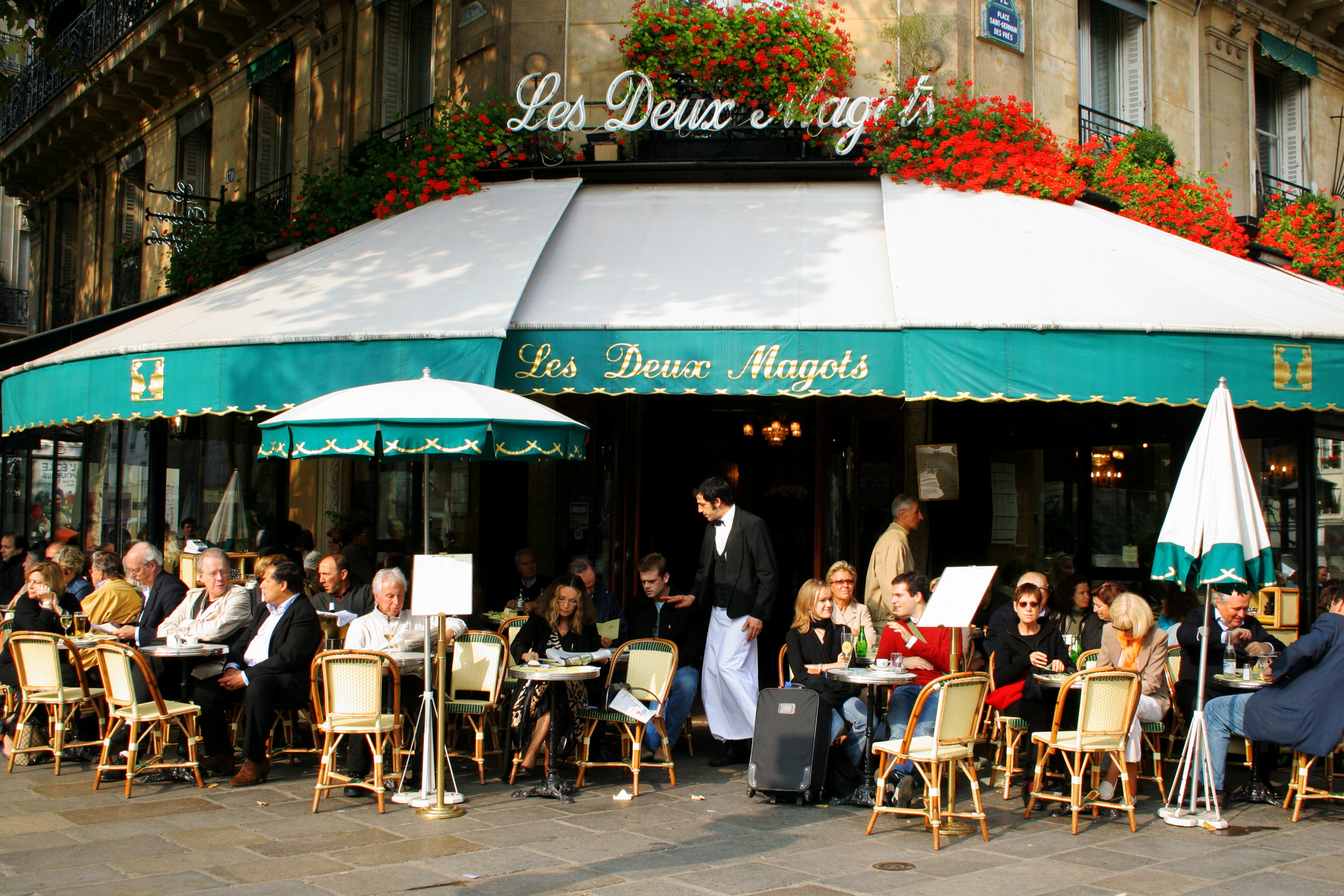 After visiting the Eiffel Tower, Daniel and his aunt Juliette walk over to the Latin Quarter (6th & 7th arr.) known for the Sorbonne and other educational institutions and lively student atmosphere.
After visiting the Eiffel Tower, Daniel and his aunt Juliette walk over to the Latin Quarter (6th & 7th arr.) known for the Sorbonne and other educational institutions and lively student atmosphere.
Called “Latin” quarter because Latin was the language of learning in the Middle Ages, its winding streets are the home of quirky second-hand bookshops, and hip cafés and bars.
At the café Les Deux Magots, Daniel and his aunt enjoy a glass of wine to finish the evening. Located in the Saint-Germain-des-Prés neighborhood, the café was a popular meeting place for intellectuals, writers, and artists.
Besides Beauvoir and Sartre, its patrons have included Ernest Hemingway, James Joyce, Pablo Picasso, Albert Camus, Bertolt Brecht, James Baldwin, Richard Wright, Julia Child, and others.
Since 1933, the Deux Magots literary prize has been awarded every year to a new French novel that is a little off-beat and non-conventional. The writer who received the prize in 2016 was Pierre Adrian for his novel La Piste Pasolini (published by Les Équateurs).
TRAVEL MEMORIES WITH A BOAT TOUR ON THE SEINE
Near the end of his visit, Daniel and his aunt take a river cruise on the Seine. It's his chance to see many of Paris' monuments one last time.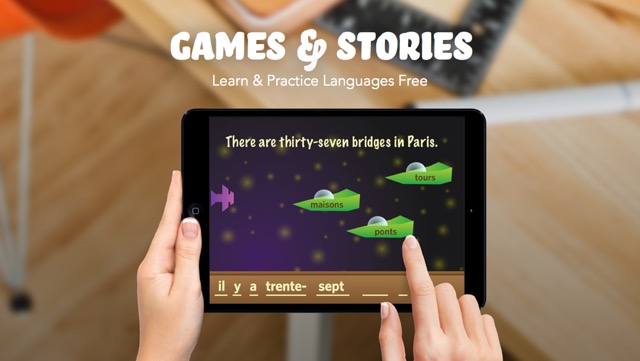
A boat tour on the Seine during a sunny day with the “Bateaux Parisiens,” “Bateaux Mouches,” or “Vedettes de Pont Neuf” is indeed a great way to enjoy many of the Paris sights and add to your travel memories. You'll glide under quite a few of the 37 bridges and learn about the Paris history.
(Click on the image of our Facebook page for our French Quick Game: Paris Quiz!) A boat tour on the Seine also passes by the new buildings of the National Library.
France's national library dates back to the 14th century. First located at the Louvre Palace, the collection of book grew dramatically over the centuries and was moved again and again into more spacious housing.
The latest expansion, which included new construction, was initiated by President François Mitterrand. The 4 angular towers of the Mitterrand Library - which suggest four open books - were built on the Right Bank of the Seine in the 13th district and opened in 1996.
Controversial since its inception, the new facility had its share of design and construction problems as this article Books Under Glass: the Bibliotheque Nationale de France confirms.
A dinner cruise at night may not be the gourmet highlight of a Paris visit, but lets you experience why Paris is “la Ville Lumière.”
Daniel's travels in France take him also to Aix-en-Provence and Avignon. You'll read about these two cities in a future blog post.
Bio: Ulrike Rettig is the co-founder of GamesforLanguage.com. She is a lifelong language learner, growing up in Austria, the Netherlands, and Canada. You can follow her travel memories on Facebook, Twitter and Instagram, and leave any comments with contact or below.
